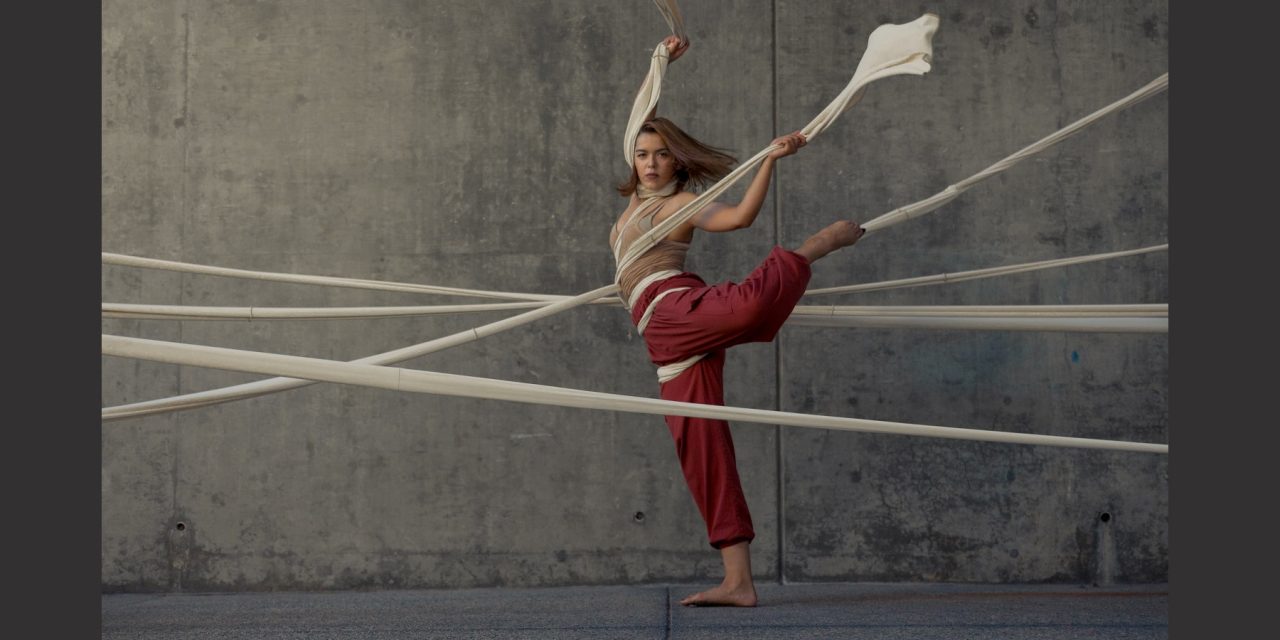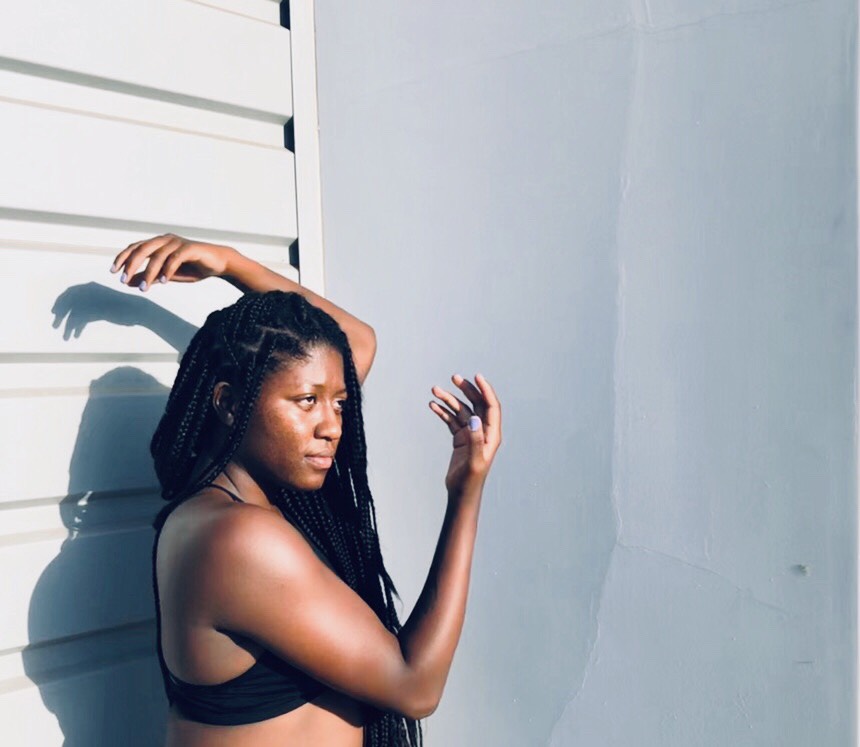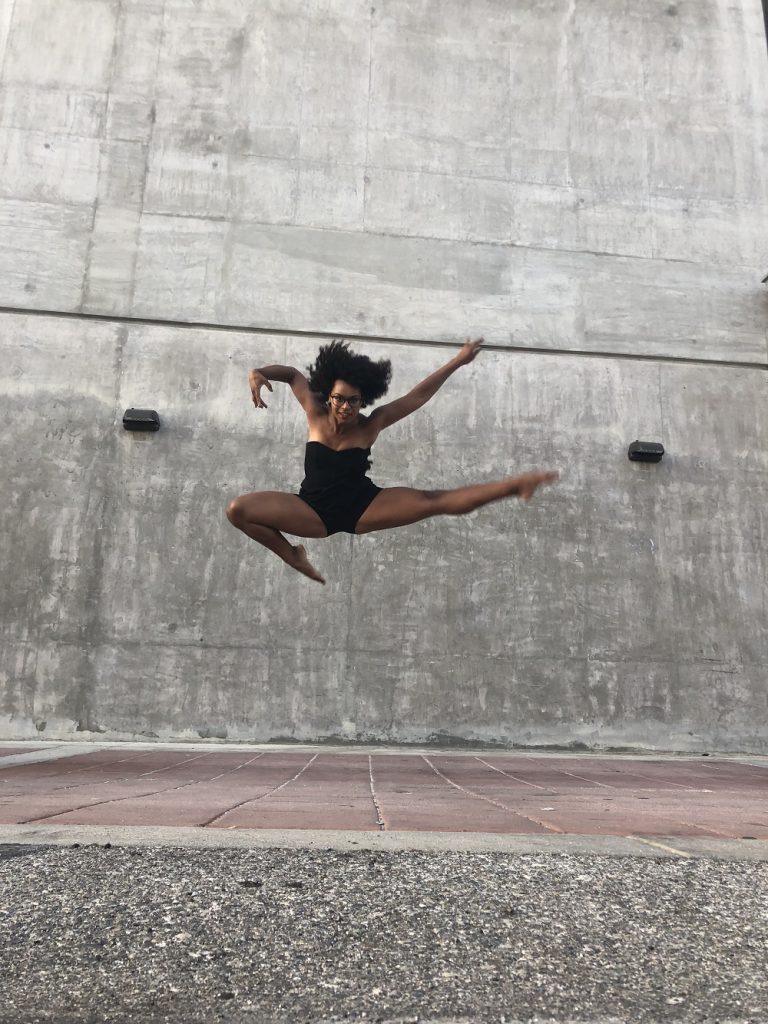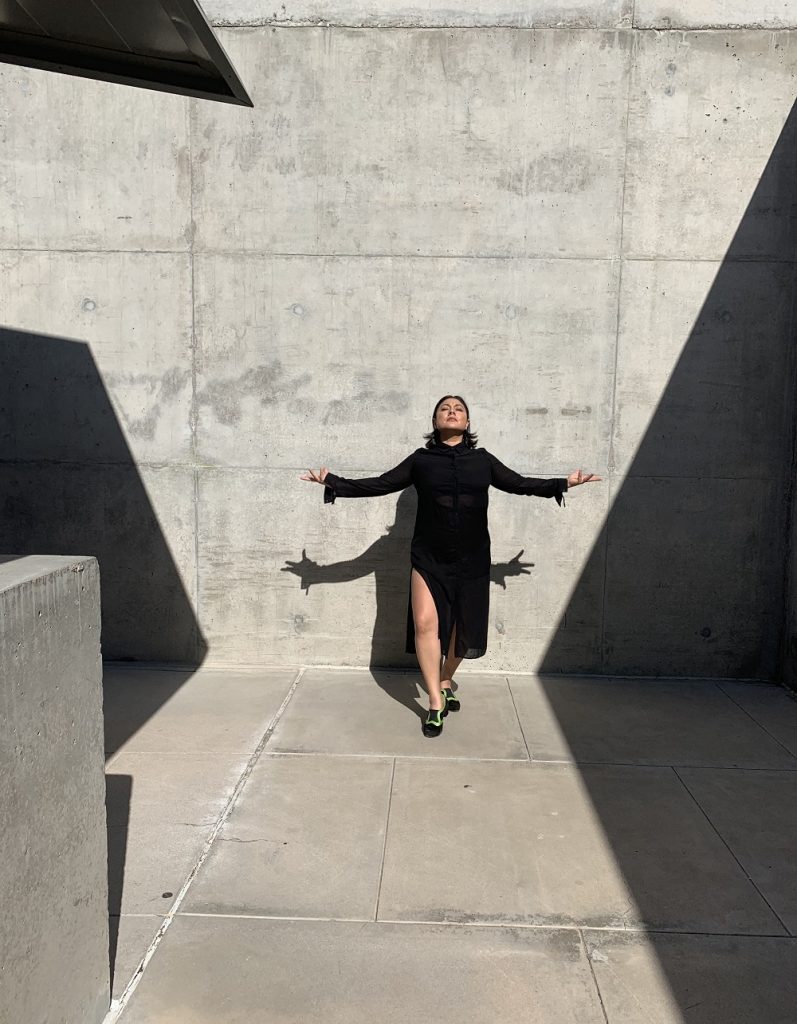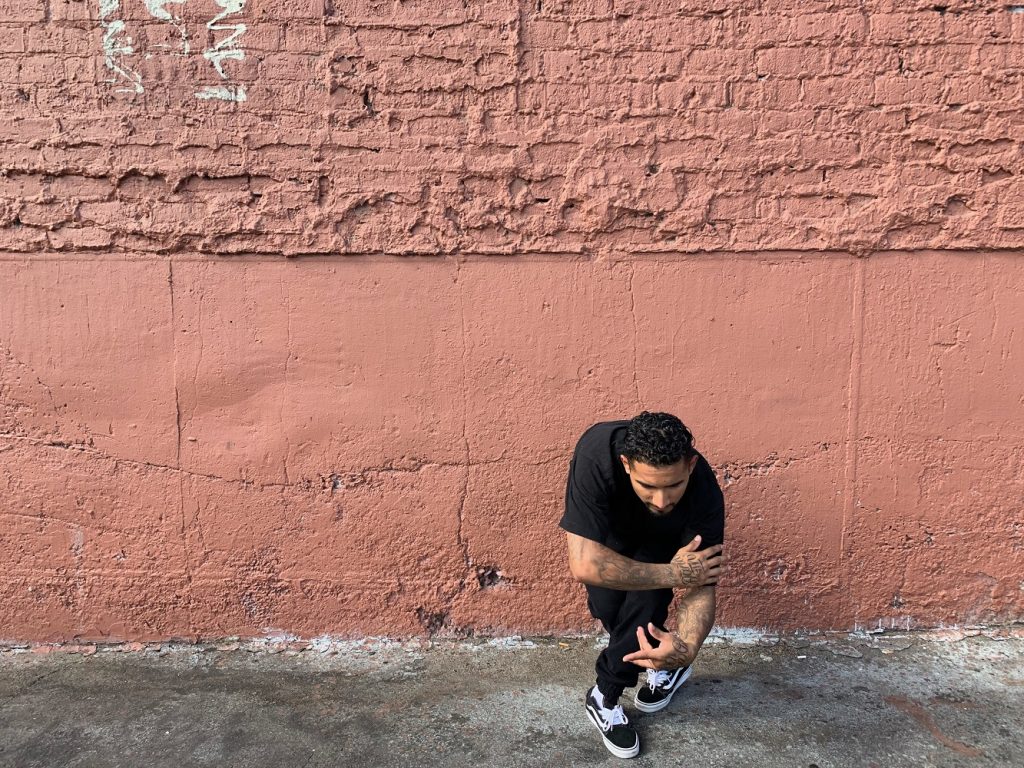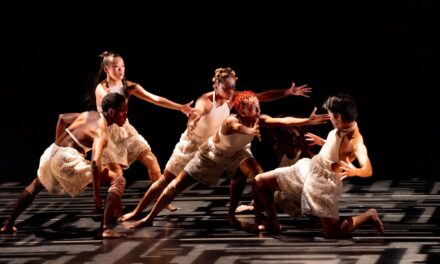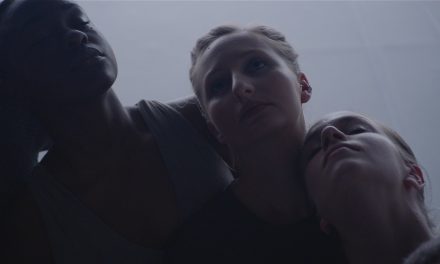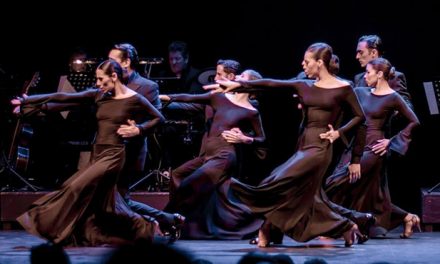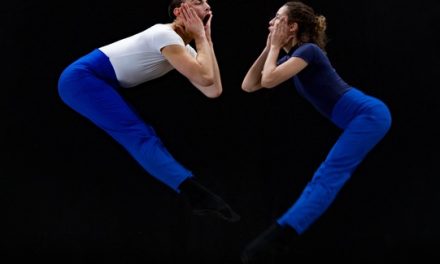At the Bootleg Theater on Friday September 20th, choreographers from California and Arizona came together to put on the annual BlakTinx festival celebrating the works of Black and Latinx choreographers. The festival included ten choreographies that touched on a unique and diverse range of topics and themes. The audience matched the performance in diversity and was enlivened by many young people and families.
The night opened with Caged, choreographed by Irishia Hubbard of Hubbard Collective. The piece was set to music with a steady and heavy beat. There was clear strength in the connection between the performers which resulted in an almost euphoric unison throughout the piece. These dancers were very well coordinated with one another, therefore creating many very strong shapes onstage.
Her Name was Miriam, choreographed and performed by Rosanna Tavarez explored Tavarez interviewing her mother about a day when immigration officers came and raided the factory where she had worked in the 1970’s. The performer, dressed in an white flare pants and a white shirt, danced adorned in long and thin glittering chains. Tavarez moved in between recorded interviews with her mother and music by Thelma Houston that transported the audience to the time during which her mother and others had experience such a tragedy. The back and forth between music and the interview definitely established a portal to the 1970’s when the event took place. Tavarez’s movements were subtle and very internal, perhaps demonstrating a connection between the interview and story line.. The story was perhaps the strongest aspect of this piece and it was without a doubt a story that felt necessary to be told, heard and processed by audience members that night.
Process, choreographed by Jad Charron, featured two performers and as stated in the program, was “inspired by the Black Lives Matter movement and Charon’s (the choreographer) first trip to Africa. The work examines process; the process of unlearning, relearning, remembering, reconnecting, and restoring among Black women”. The description also stated that this is a portion of an evening length work. This read clearly and the piece felt that it was making very strong statements that I would have loved to see explored further. The performers danced in relation to a beautifully shot video of three Black performers dancing on top of a sandy cliff overlooking the ocean. In the video they seemed free and liberated in their movement. The performers on stage appeared to capture that freedom and integrate it into their bodies as the video progressed. These performers in particular had noticeably strong gaze and were able to shift my experience with just a look..The piece ended at an intense moment and left me wanting to see the rest.
One was a solo choreographed and performed by Shanice Brazwell that explored the journey of transformation. The dancer appeared on the stage in a white skirt and loose brown button up shirt. Early on she shed those items and completed the piece in black shorts and a glittering mesh shirt. This performance seemed very minimalist in its approach to the use of music, space, and costumes, however, the minimal approach allowed the audience to focus on the strong movement of the dancer. The performer had an astounding amount of musicality on her body which made her movement exciting to watch. The minimal approach allowed for a very focused viewing experience as an audience member, and helped the viewer feel better connected to the performer. Shanice Brazell captured the audience that night with graceful and dedicated movement.
Roots in Thought, choreographed by Nancy Rivera Gomez, featured eight dancers who as stated in the program investigated, “The journey of a dream that comes to the different stages of frustration and confusion while stepping into the unknown.” I was very impressed by where this piece was able to fit into such a short amount of time. Roots in Thought began with the dancers moving against a projection of what appeared to be a slowly growing pool of thick black ink to the sounds of a woman reciting a poem in Spanish. At one point the dancers began moving with long strings of fabric that released, but mostly controlled the dancers. They moved in perfect synchronicity even with the added challenge of maneuvering their bodies with fabric to create very beautiful and expansive shapes in space. This work seemed to focus on a process of learning to love oneself through the act of always going back to who you are. However, it is clear that these dancers found freedom in their commitment to an investigation of self through their movement and choreography.
Muscle Memory was a solo work performed and choreographed by Sadie Yarrington that began with directions from a man on stage for everyone to look under their seats for a paper that contained text that the performer would request to be read out loud during the performance. The anticipation of the unexpected sound scores definitely created excitement and curiosity among the viewers. The performer appeared on stage in a bright yellow dress as she called out the first number and began to move. There was a mesmerizing combination of strength and frailty in her body while the lines that audience members read out to her were moments that dealt with themes such as race, love, sexuality, childhood, adulthood, and many more. The piece definitely seemed personal and a view at the many moments in life that make us who we are and build us up as people. The piece was most definitely vulnerable and I am sure that it took a lot of personal investigation for the Yarrington to perform it with such confidence, freedom, and truth. The work ended with Yarrington dancing to Sam Cooke’s rendition of Peace in the Valley and in her final minutes on stage, Yarrington seemed to relish in the glory of being and loving herself.
Sanchocho was choreographed by Shantel Ureña and included four dancers. The sound score was a mix of nostalgic salsa by Hector Lavoe and spoken word by the choreographer. The diverse casting of the dancers appeared to intentionally as the work dealt with colorism within the Latinx community. The dancers had a very interesting movement style whose roots were embedded in Salsa and other modern dance techniques. There was a softness in the way that the dancers moved and they connected with one another through that softness. Many times, they looked to be dancing for each other as they faced one another in a circle. The subtly in their movement may have been alluding to the nuances of colorism in various circumstances. The music added a very nostalgic and dream-like atmosphere to the piece and perhaps the dancers knew each other on a personal level as they felt strongly connected while dancing.
Menudo, choreographed by Angelina Ramirez and performed by Angelina Ramirez and Elisa Lucia Garcia Radcliffe, most definitely stood out that evening. The piece began with the two performers dancing with exaggerated, almost manic expressions on their faces to music by The Gipsy Kings. The performers stood side by side, only feet apart, and facing the audience for a majority of the performance. From the very beginning, it was clear that this Menudo alluded to the dehumanization that a performer can experience when the only expectation from the audience is that the performer plays into a stereotype for sheer superficial applause and remarks. Performers, such as Ramirez, who dance Flamenco are too often underappreciated for their technical ability and skill and only remembered for a costume. At one point, Ramirez screams in pain, and although jarring, it felt necessary to alert audience members who otherwise could have left this show thinking this performance was simply a quirky interpretation of Latin dancing. The idea that a Flamenco dancer cannot reach beyond Carmen and The Gypsy Kings is not only limiting for the performer, but also the audience.
However, Ramirez reminds us of how she brought resilience into her art through personal connection between her identity and community as she engages in dancing with her counterpart, Garcia at the end of the piece. Although Menudo has a very strong concept, the distinction between when the performers were playing into a stereotype versus being themselves was not always clear and could have been supported by more distinguishable use of the body. I also found myself wanting to see more of Ramirez and Garcia embracing their art toward the end of the piece. At this point, the dancers moved from pure joy that grew from being able to feel supported and loved by each other. The work was a reminder of the damage that can be done when we choose to only see the superficial and one dimensional aspects of something, because there is so much more to gain if we take the risk as an audience member and as a person to think critically about what we are exposed. And when we are on the other side, this piece is a reminder to never lose the connections that make us feel so supported and human in the face of adversity.
The Tattooed Man, performed and choreographed by Alex Swift Almarez, was one of the few pieces choreographed by a man. The piece was done in complete silence and began with the performer taking the stage in a sweatshirt and black pants. The archetype of a man of color in a sweatshirt with the hood up evoked many different thoughts and feelings. We already had an assumption about this man, yet we did not know him. It was interesting that while he had his hood up, the performer never looked at the audience. It made me think, how often do we make assumptions about a person’s circumstances rather than seeking to find out who they are?
The performer had a real commitment to staying present during the whole piece. The fact that there was no music also forced the audience to come face to face with the man. Toward the end the performer removed his sweatshirt to reveal a full tattooed upper body. He traced his tattooed with his fingers, caressing them with his fingertips. He brought softness to something that society normal perceived as being tough and rigid. I commend this performer for bringing the audience into a part of his personal reality and keeping us present in the moment.
The night ended with Derelict, choreographed by Angel Rangel. The music was strong and heroic and the dancers were costumed in earth toned costumes of draped fabric around their bodies. They often moved in unison, matching the music’s intensity. It came as no surprise that in the program it stated that this work was dedicated to the resilience of the people of Puerto Rico after Hurricane Maria. Often in the media we only hear about the tragedy, but never the strength and resilience it took for people to recover from such a horrible disaster. The piece had strong choreography and required a lot of strength and power from the dancers.
This evening of performances flew by as each dance was so unique from the next. Audience members left the Bootleg Theatre that night feeling excited and curious about what they had just seen. When all the performers of different colors took the stage for a final bow, one thing rang clear; that we need more of these spaces in Los Angeles where voices of color are at the forefront of the stage. I am grateful to Festival Director Licia Perea and performers for making a festival such as BlakTinx possible. Not only was this festival led by people of color, but it also created avenues for young performers of color to grow professionally and artistically within the dance world. For the many young people in the audience, it is experiences like this that inspire and motivate the next generation of dancers.
Written by Corrina Roche for LA Dance Chronicle, September 26, 2019.
For more information on the BlakTinx festival, click here.
Also save the date for the BlakTinx alumni concert, “Ingredients”, happening October 25th and 26th in 2020 at the Bootleg Theatre. To stay updated on when tickets will be available, click here.
Featured image: Nancy Gomez – Photo by Adrien Padilla

